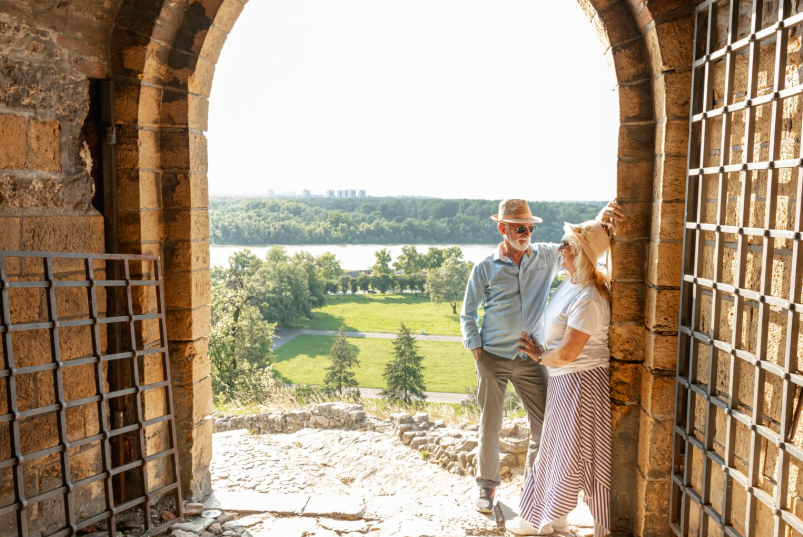
Europe’s Most Luxurious Private Vineyard Estates to Stay In
Europe’s Most Luxurious Private Vineyard Estates to Stay In
There’s something uniquely restorative about falling asleep amongst vines, waking to the quiet rustle of leaves, and tasting a glass poured from the very land beneath your feet. Across Europe, a new generation of private vineyard estates blends impeccable hospitality with terroir-driven wine experiences — offering guests not only refined accommodation but intimate access to winemaking, guided tastings, and immersive farm-to-table cuisine. Below, discover a curated selection of the continent’s most luxurious vineyard estates where privacy, craftsmanship, and design come together to create unforgettable stays.
1. A Tuscan Palazzo with a Boutique Winery
Tucked into rolling hills of cypress and olive, a restored palazzo offers exclusive rental of its eight-suite wing and private cellar. Guests enjoy guided tours of age-old vineyards, barrel tastings in the cellar, and a private sommelier pairing sunset dinners. The estate’s winemaking team welcomes visitors into hands-on harvest activities when in season; otherwise, bespoke tastings trace the family’s vintages through vertical flights. Architectural integrity blends with modern comforts — heated stone floors, a private pool, and a library curated with regional maps and wine literature.
2. A Provençal Château with Organic Vineyards
This elegant château sits within sun-drenched gardens framed by lavender and vineyards cultivated under organic principles. Hospitality here is rooted in slow living: languid breakfasts of local chèvre and olive oil, midday picnics among the vines, and evening tastings focused on rosés and Grenache blends. Private cooking lessons with the château’s chef pair seasonal estate ingredients with estate-produced wines. Sustainability is central — water-wise irrigation, bee hives, and a commitment to low-intervention winemaking ensure both exceptional terroir expression and environmental stewardship.
3. A Contemporary Spanish Bodega on a Hillside
Dramatic architecture meets viticultural excellence at this hillside bodega where guests can book the entire property for a private retreat. Interiors are minimalist and sunlit, designed to showcase panoramic vineyard views. Offerings include in-depth winemaking masterclasses, guided hikes across terraced slopes, and pairings that marry regional seafood and cured meats with premium tempranillo and garnacha expressions. For collectors, the estate maintains a private reserve library and can arrange cellar purchases or direct shipping of rare bottlings.
4. A Boutique Estate in the Douro Valley
Overlooking the Douro River, this quinta invites guests to experience port and still-wine production from vine to bottle. Private boat cruises at dawn, vineyard picnics at sunset, and vertical tastings highlight the region’s steep-slope viticulture. Accommodation blends rustic stonework with luxurious linens, and the estate’s cellar door is open for private blending sessions — create a bespoke cuvée alongside the resident winemaker. A strong focus on heritage means many of the vineyards are worked by hand, and guests interested in conservation can learn about traditional soil-keeping techniques.
5. A New-Age English Estate with Pinot Noir Focus
England’s cool-climate wines have gained a devoted following, and select manor estates now offer private stays that spotlight world-class sparkling and pinot noir. Expect refined, terrace-facing suites and intimate cellar tastings that map the estate’s progression from budburst to disgorgement. Activities frequently include vineyard walks with production team members, champagne-style tastings, and seasonal menu pairings that emphasize local lamb, root vegetables, and artisanal cheeses. These estates pair the gentility of English country life with modern vinous ambition.
6. An Italian Island Vineyard Retreat
For a vineyard stay framed by sea breezes and volcanic soils, island estates offer a heady mix of maritime cuisine and mineral-driven wines. Villas often sit within terraced vineyards that step down toward cliffs or sheltered coves. Highlights typically include cellar door tastings of unique indigenous varietals, private boat tours with wine pairings, and farm-to-table meals that highlight seafood caught the same morning. Design sensibilities lean Mediterranean — whitewashed walls, shaded loggias, and outdoor lounges built for long evenings beneath the stars.
How to Choose the Right Private Vineyard Estate
Selecting the ideal estate depends on priorities: do you crave hands-on winemaking, a secluded romantic escape, family-friendly amenities, or an educational retreat with masterclasses? Consider seasonality (harvest is transformative but busy), travel logistics (some estates require transfers on narrow country roads), and the level of privacy you need — many properties offer full buyouts for exclusivity. Finally, ask about on-site chefs, dietary accommodations, and any bespoke experiences such as truffle hunts, olive harvest participation, or helicopter transfers for a truly elevated arrival.
Final Thoughts
Luxury vineyard estates are more than beautiful places to sleep; they are immersive ecosystems that connect guests to landscape, culture, and the labor of winemaking. Whether you seek a contemplative week among ancient vines or an action-packed harvest retreat, Europe’s best private estates combine thoughtful design, impeccable service, and — most importantly — wine that tells the story of its place. Plan intentionally, communicate your interests with the estate in advance, and you’ll leave with new favorites in your cellar and memories that will linger long after your final glass.
Stay Connected for More Travel and Lifestyle Inspiration. For more insights into travel, culture, and lifestyle tips, follow me on Instagram
@salvadorordorica. If you’re seeking professional translation and localization services to enhance your global ventures, visit The Spanish Group — your trusted partner in bridging cultures worldwide.




